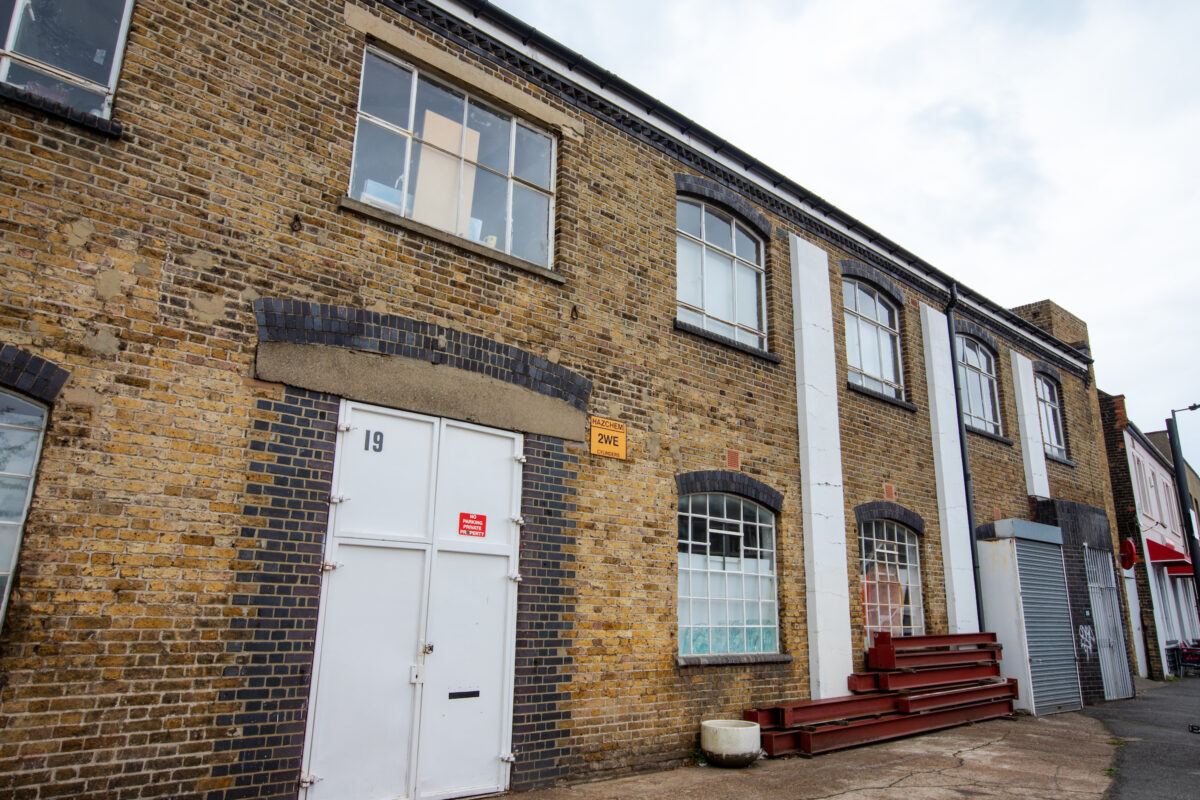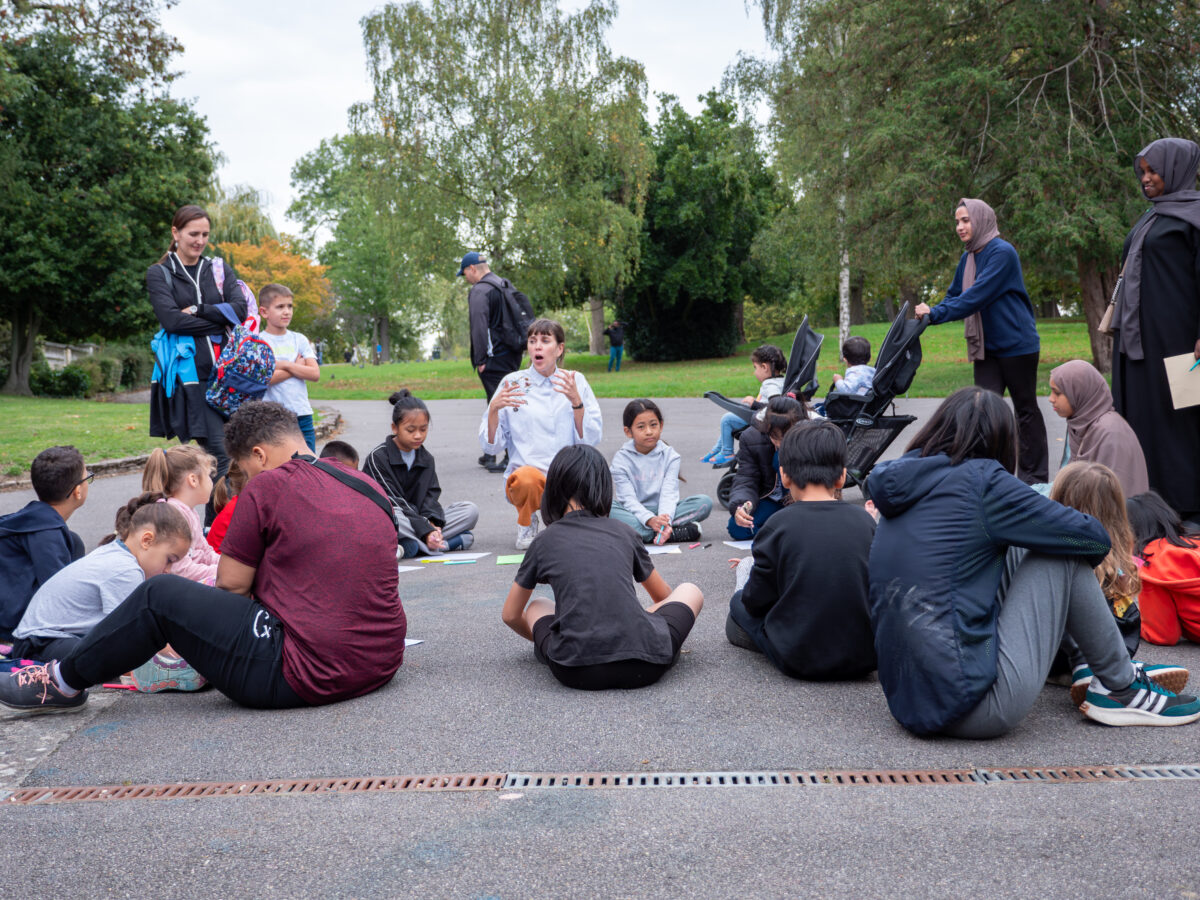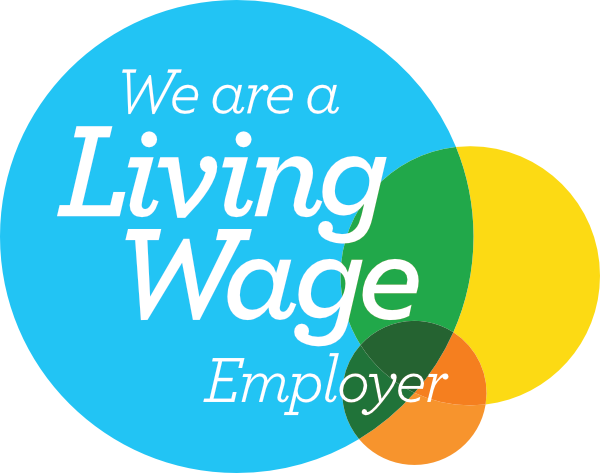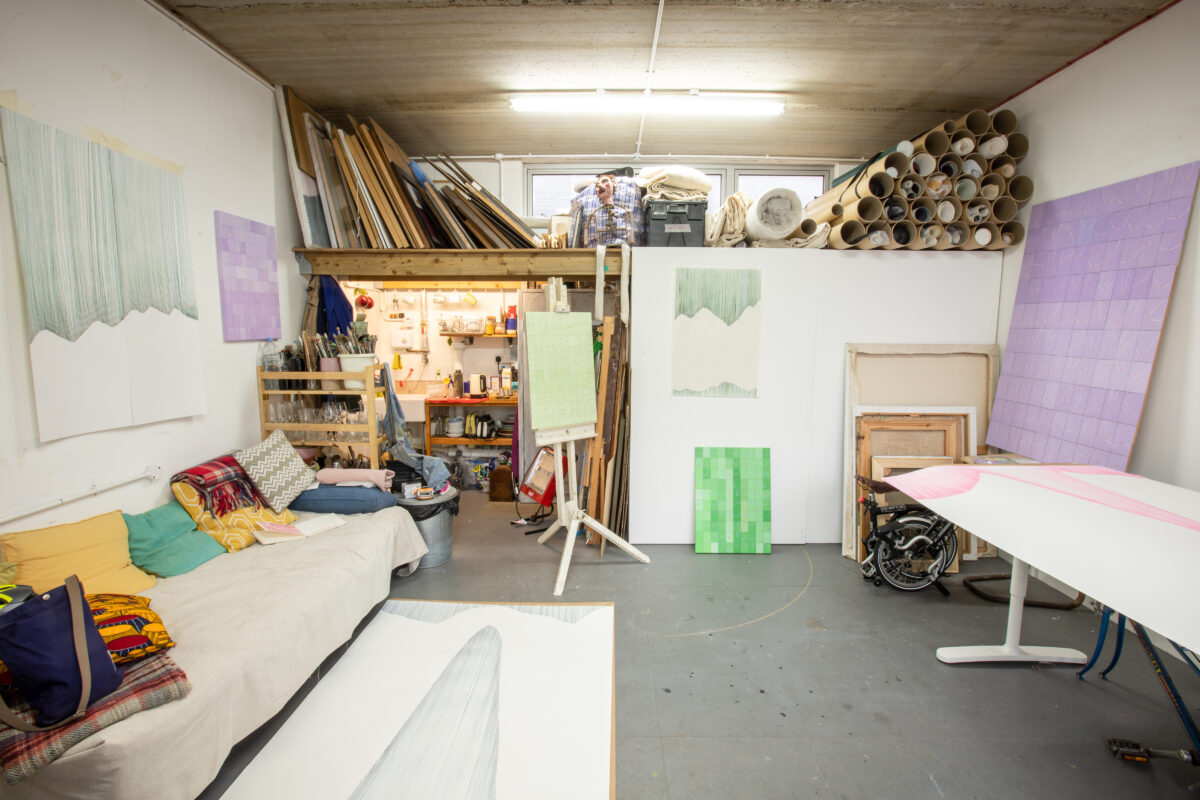
Studio toolkit: Studios in the winter
In a recent studio visit with ACAVA’s Curator (Professional Development), a sculptor suggested that artists would find it beneficial to have more knowledge and tips about warming and retaining heat within artist studios.
We acknowledge and understand that heating and utilities are a pressing issue in our studio community and beyond to peers in home studios. The nature of studio buildings is that they are often draughty and poorly insulated with low energy ratings, further impacted by new fire regulations that have changed how artists are allowed to heat their studios.
Having listened to this artist’s request and understanding this collective concern to ensure artists can maintain thriving practices during colder months, we’re taking proactive steps to pool and share knowledge between our team, including technicians and artists. This has been collectively compiled with artists’ tips and tricks, including cost-effective and environmentally friendly solutions.
Studio Holder Toolkit: Affordable, Eco-Friendly Heating Solutions
Learn how to keep your studio warm in colder months with this toolkit which includes insulation tips, efficient methods, and suitable materials for a comfortable and productive workspace.
1. Understand Your Studio Environment
High ceilings, an open floorplan, large windows and hard surfaces lend themselves best to supporting artists’ practices. Arguably these characteristics also make heating and insulation more challenging.
Are there specific colder pockets forming within areas of the room?
To enable free air circulation and promote even heat distribution, keep items like furniture and drapes away from heat sources to avoid obstructing the flow of warm air, leading to cold pockets forming.
Heat Accumulation
Heat rises and accumulates around the ceiling. If your studio has a ceiling fan, these aren’t just successful in cooling down in hot weather – a low speed can distribute warm air gently without producing a draft.
Window facing
Work out which direction your window faces and open the curtains during the day to let light and heat in, closing them to keep the heat in once the sun has disappeared to minimise heat loss.
Furniture positioning
Exterior external walls can contribute to heat loss, so position furniture against these, especially if they store lots of materials and artworks. Position desk or seating away from drafty areas like poorly insulated windows or doors.
Temperature Sensitivity by Practice
Painters: Moderate warmth helps paint dry evenly; excessive cold may slow drying time.
Resin Artists: Require warmth for proper resin curing and to avoid uneven textures.
Mixed Media and Sculpture: Cold or fluctuating temperatures can affect adhesives and shrinkage.
Ceramicists: Heaters in clay studios create an uneven draft. If you use one, be sure to cover your work well so you won’t get uneven drying and warping.
Photographers: Blackout material works well as an insulator on windows and to control light.
Digital/Moving Image/screen-based practices: Take regular breaks away from the computer to walk and stretch to get the blood flowing.
Relocate temperature-sensitive materials: If the studio’s storage area gets very cold, move vulnerable items to a warmer location. This can support materials lasting longer.
Keep sensitive materials in a steel cabinet with a dehumidifying rod, which will keep them around 30 degrees. Keep flammable materials away from heat sources. Oil-saturated rags, steel wool, and gloves can generate enough heat to combust if collected in large quantities. Store them in a lidded metal container.
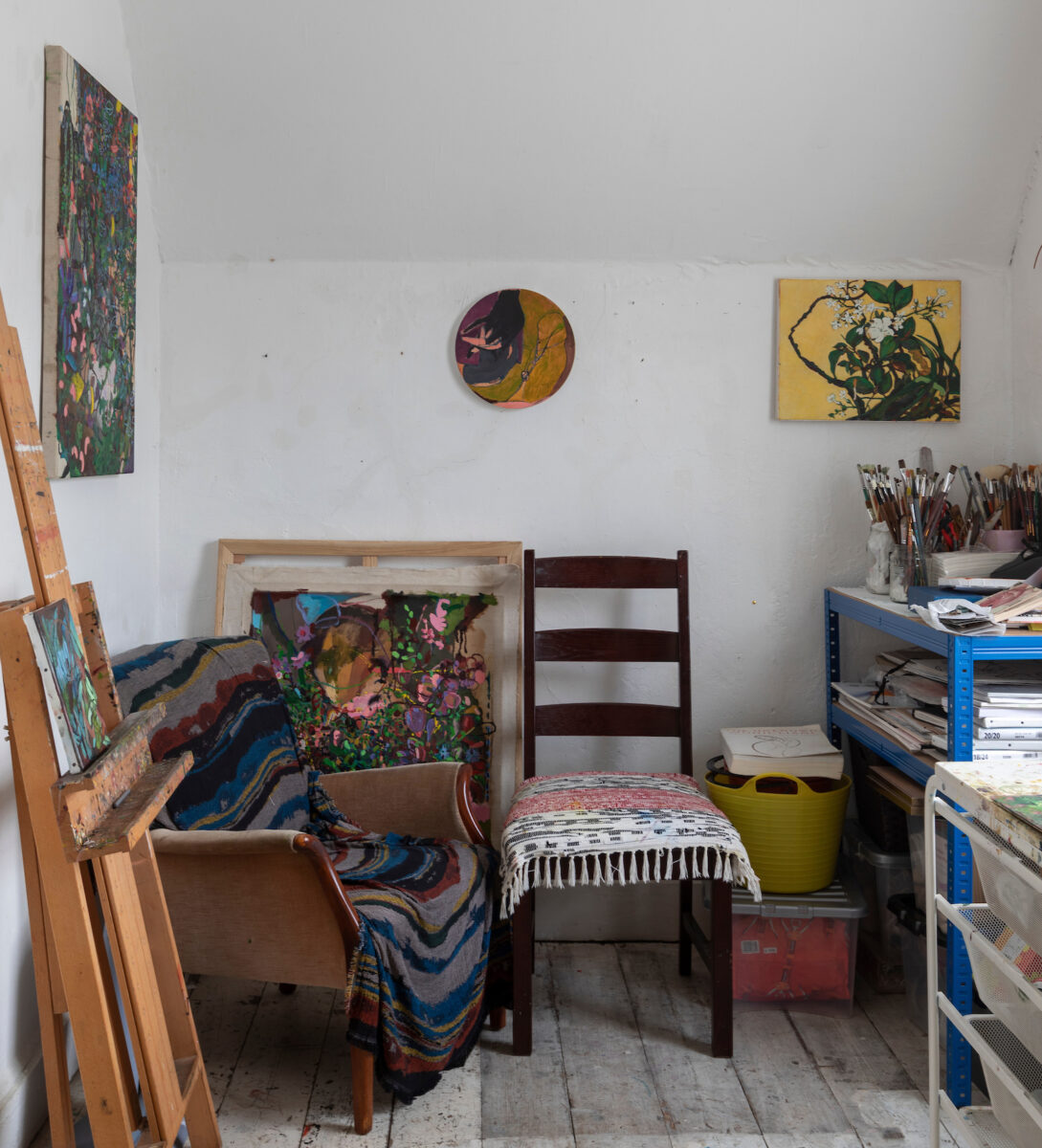
2. Key Insulation Areas and Materials
Windows and Doors
A major source of heat loss. Efficiently insulating these areas can significantly boost studio warmth.
- Insulating Film for Windows: A transparent thermal film creates an air pocket that retains heat while reducing moisture and condensation. Patio door-sized ones for oversized industrial windows.
- Example: Tesamoll Thermo Cover.
- Heavy Curtains: Keep cold air out and trap warmth inside. Open curtains during the day to let sunlight warm the space naturally, then close them at dusk.
- Draught Excluder Tape: Apply around door frames and windows to block gaps and drafts.
- Example: Wool tape and Stormguard Aluminiumor rubber foam .
- Draught Excluders: These could also be old rolled-up towels or scrap textile material.
Walls
Wall insulation improves warmth, especially in unheated spaces.
- Thermal Wallpaper: Adds an insulating layer with minimal setup, take care on how this can be easily removed.
- Cork Panels: Sustainable and insulating, cork is easy to install and dampens sound as well. Please pay attention to how you affix these so they can be easily removed afterwards that leave little mark or residue.
- Radiator Foil: Radiator reflector foil is far superior to standard kitchen foil, which dulls and loses reflectivity over time. Specially designed radiator foil stays effective to reduce heat loss through walls and doesn’t need regular replacing.
Floors
Cold floors can chill an otherwise warm room.
- Rugs or Mats: Natural fibre rugs, foam, or cork mats add insulation and make surfaces warmer to stand or work on.
- Rubber or Cork Floor Mats: Offer kneeling support, vibration damping, and soften the coldness of a concrete floor. Please pay attention to how you affix these so they can be easily removed afterwards and leave little mark or residue.
- Example: black floor mat set
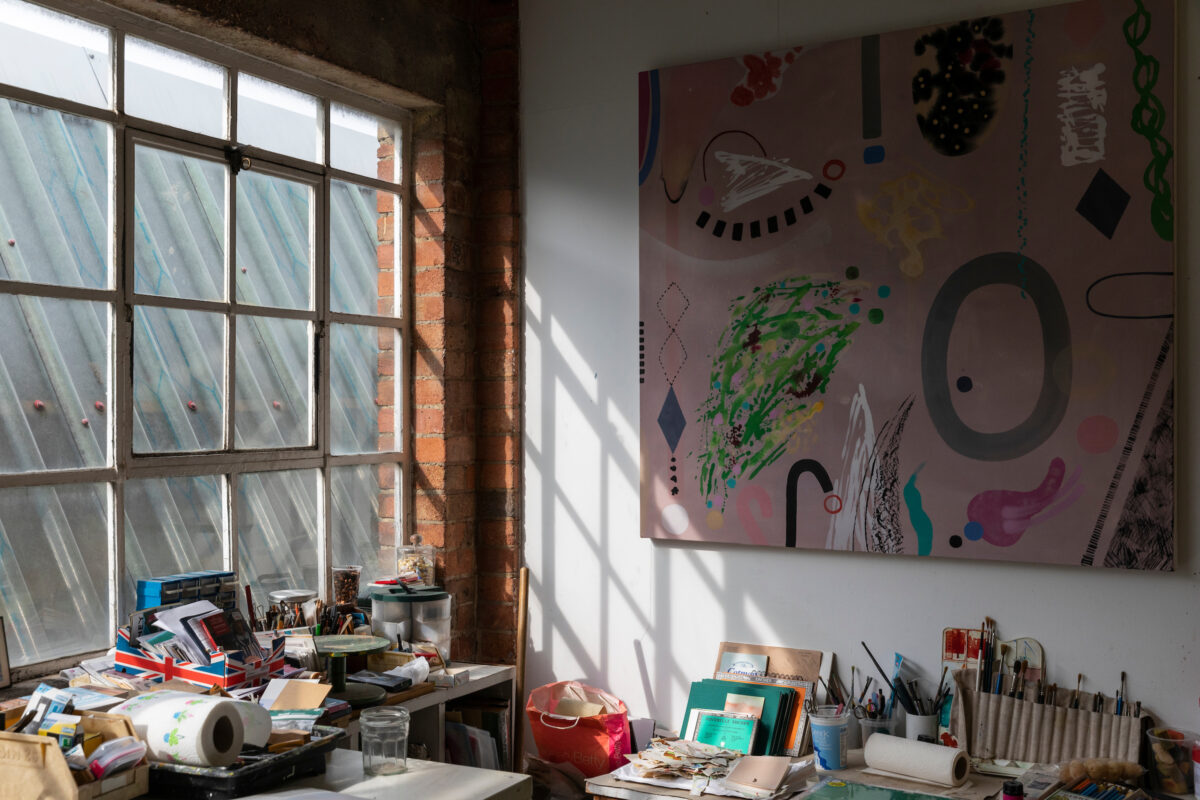
3. Affordable Heating Options
Oil-Filled Radiators
Energy-efficient and good for extended use as they provide gradual, long-lasting warmth.
Oil filled radiators are more economical to run because they retain heat longer and power demand through the temperature control is called upon less frequently. They take slightly longer to heat up and let off a dry heat.
Ceramic Heaters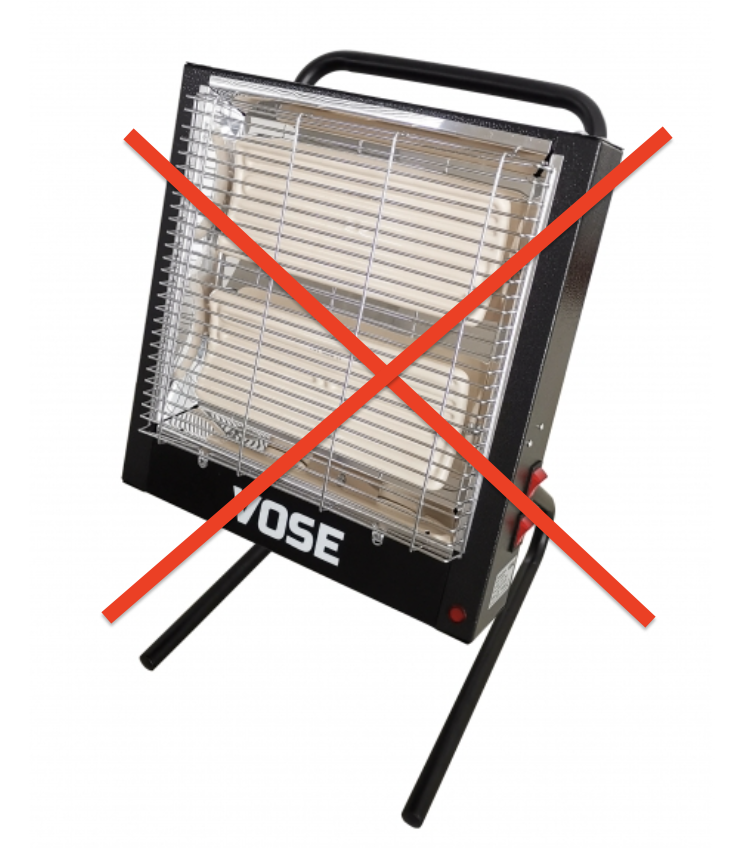
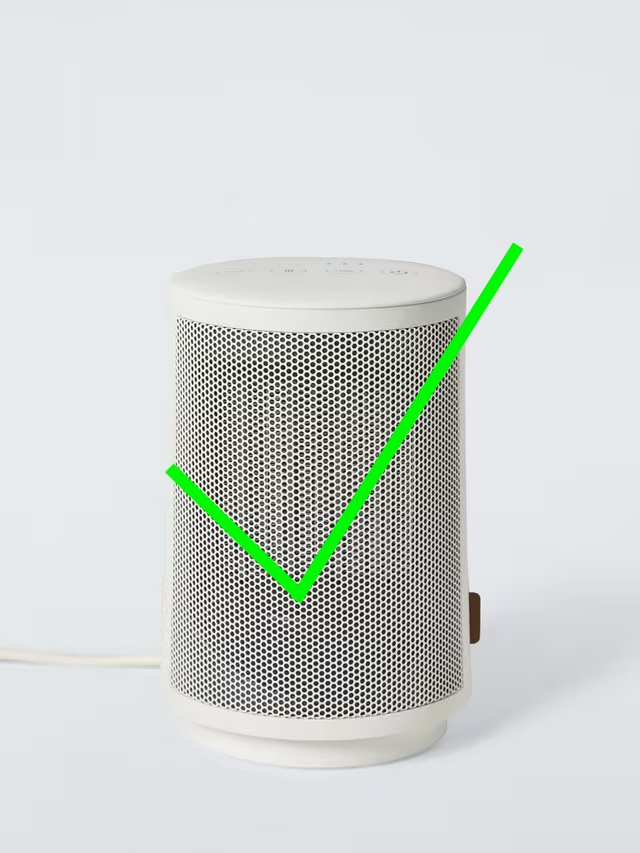
Warm up quickly and are ideal for smaller, localised heating. Better if you’re studio is on the smaller side, and/or has more furniture and shelving around the room.
Please note that ceramic heaters are safer compared with element heaters, these are dangerous and prohibited in studios.
When using ceramic heaters, we would still advise keeping 2-3 feet of clear space around the heater.
Infrared Heating Panels
Eco-friendly and efficient, infrared panels heat people and objects directly rather than heating the air, which can be ideal for studio setups. This makes them far more efficient than traditional boilers, but because they run on electricity, they are more expensive to run.
Infrared heating can be preferable than gas heating for anyone who suffers from dust allergies or asthma. Whilst conventional radiators heat the room by moving the air about the room, infrared radiation only heats objects, meaning the air doesn’t move around and dust isn’t disturbed.
They are silent whilst running.
Infrared panels transfer heat to objects, not the air. Although this makes them far more efficient than traditional boilers, it also means that they won’t work properly if anything is obstructing them. If you pop a piece of furniture in front of a panel, that object will absorb all its heat.
Look for options at The Green Age or Herschel Infrared for environmentally conscious solutions.
Heat-Emitting Lights
Dual-function lights add both light and warmth.
Example: Parabolic aluminium reflectors paired with incandescent bulbs can radiate warmth while also providing lighting. A 150-watt bulb can significantly warm a small working area. You could also combine this with aluminium foil tape for a more direct/targeted focus.
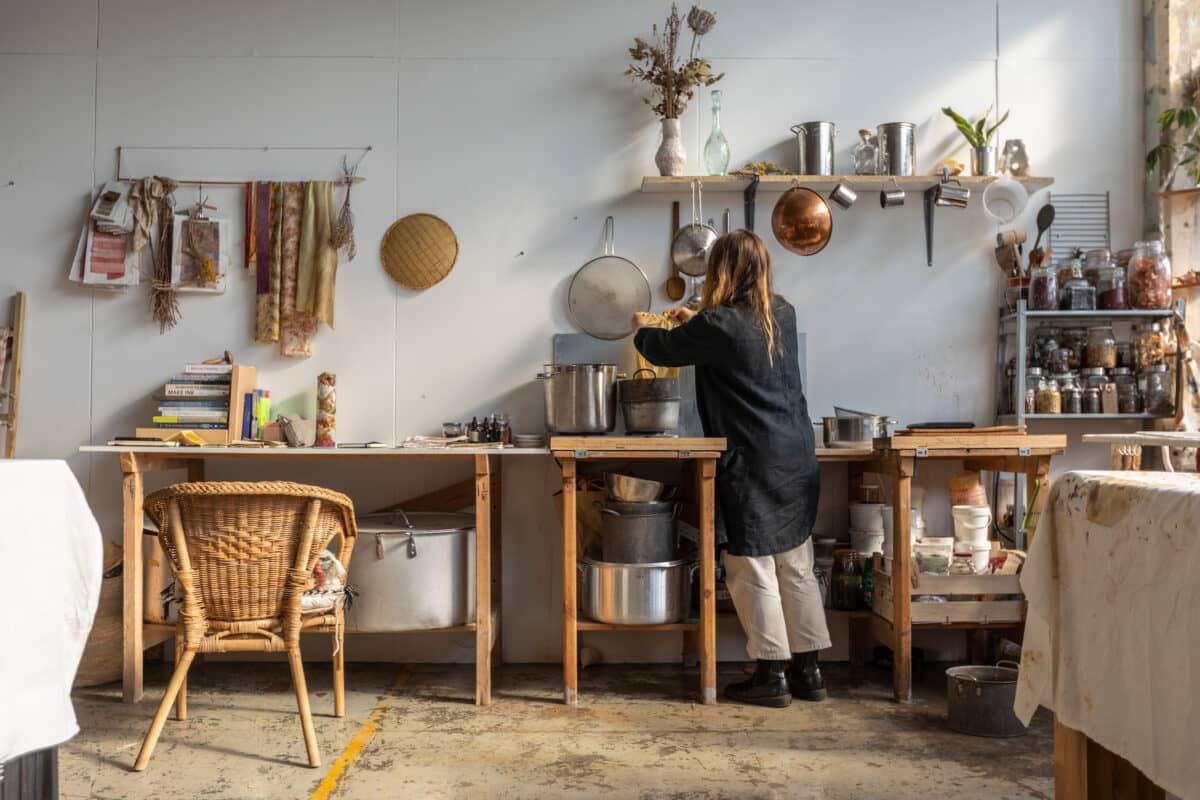
4. Personal Warmth
- Wear Warm Gear: Insulate yourself with work gloves, thick socks, and layered clothing for warmth. Often chunky layers can restrict essential movement for artists, so more thin layers are recommended, especially Uniqlo’s HEATTECH range.
- Heated clothing: Get toasty on the move with heated jackets, gilets and socks, such as these from Regatta.
- Warm Flooring: Use rugs around workstations and invest in foam or cork floor mats, which provide warmth and comfort for long hours.
- Electric Blankets and hot water bottles: These are recommended for longer sedentary periods.
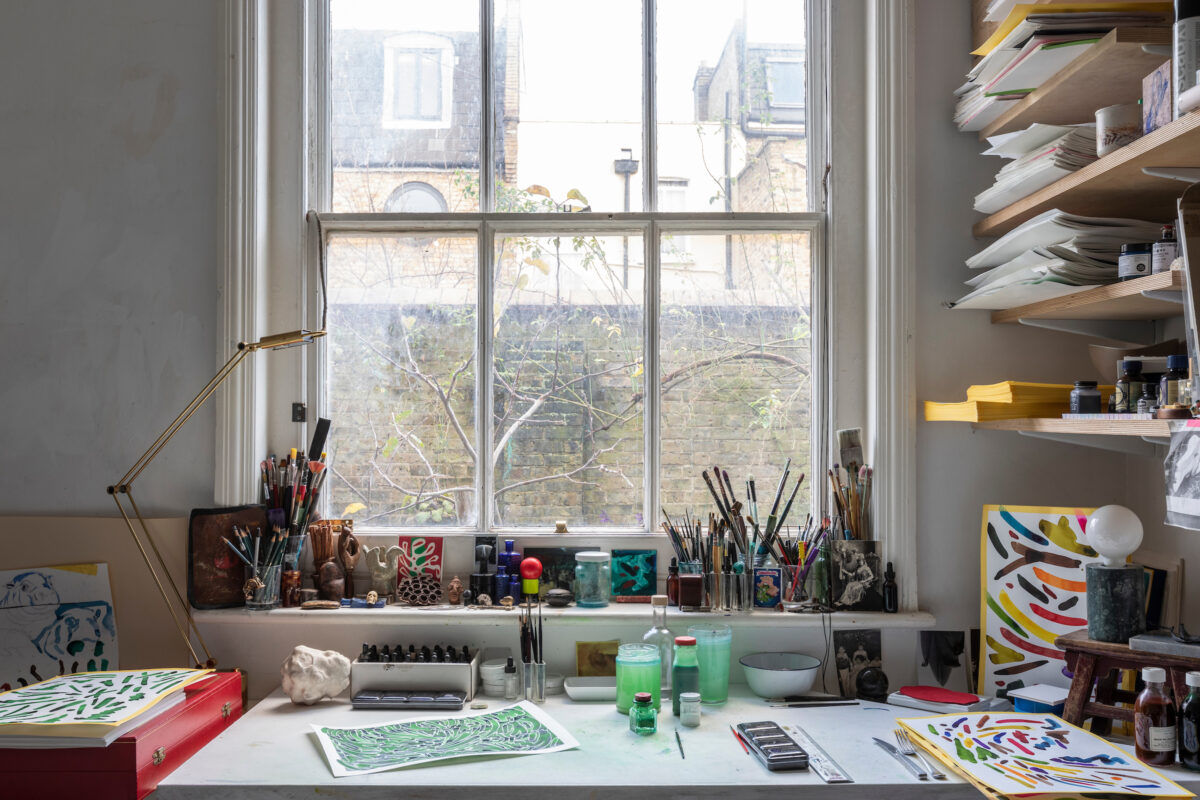
Crowdsourced suggestions from artists
- Thermal clothing, jacket always on, fingerless gloves, fleece lined jeans/fleece lined leggings
- Hot water bottles: two beneath feet, one in lap, behind back and maybe two at the sides.
- Make a hot water bottle backpack!
- Electric blanket
- Hot drink thermos
- Regular stretching
- Skipping rope
- Standing on folded cardboard boxes
- I found that a dehumidifier makes a big difference, especially in the UK with damp air, nothing ever dries and the moist air makes it feel colder than it is.
- Heavy curtains for windows
- Roll up old towels for draught excluders
- Set up a foundry!
- I knew an oil painter who would cut a small hole in a sock to wear as a glove so he could hold paintbrushes with ease. I’ve never had to but seems like a nice solution for cold hands.
- Dancing to music while painting absolutely saved my life in my first studio in the winter months.
- Work with ceramics and fire up the kiln. Residual heat lasts for ages.
- I’m double hoodie-ing right now
- Heat escapes through our heads and extremities (hands and feet), so a wool cap/beanie, gloves and thermal socks
- Thermal underwear works wonders
- Sit on a heating pad (I bought a large one and fold it in half so half is for my back and half for my butt).
- Incorporate the need for a hair dryer at certain stages of your work so you can warm up 🙂
- Large thin styrofoam panels insulate well and let some light in
You’re welcome to share your personal tips, suggestions and links to profdev@acava.org These will be published here to share knowledge amongst the studio community. We’re also building a Spotify playlist for songs to dance to in the studio, so please send us your best ‘warming up’ recommendations.
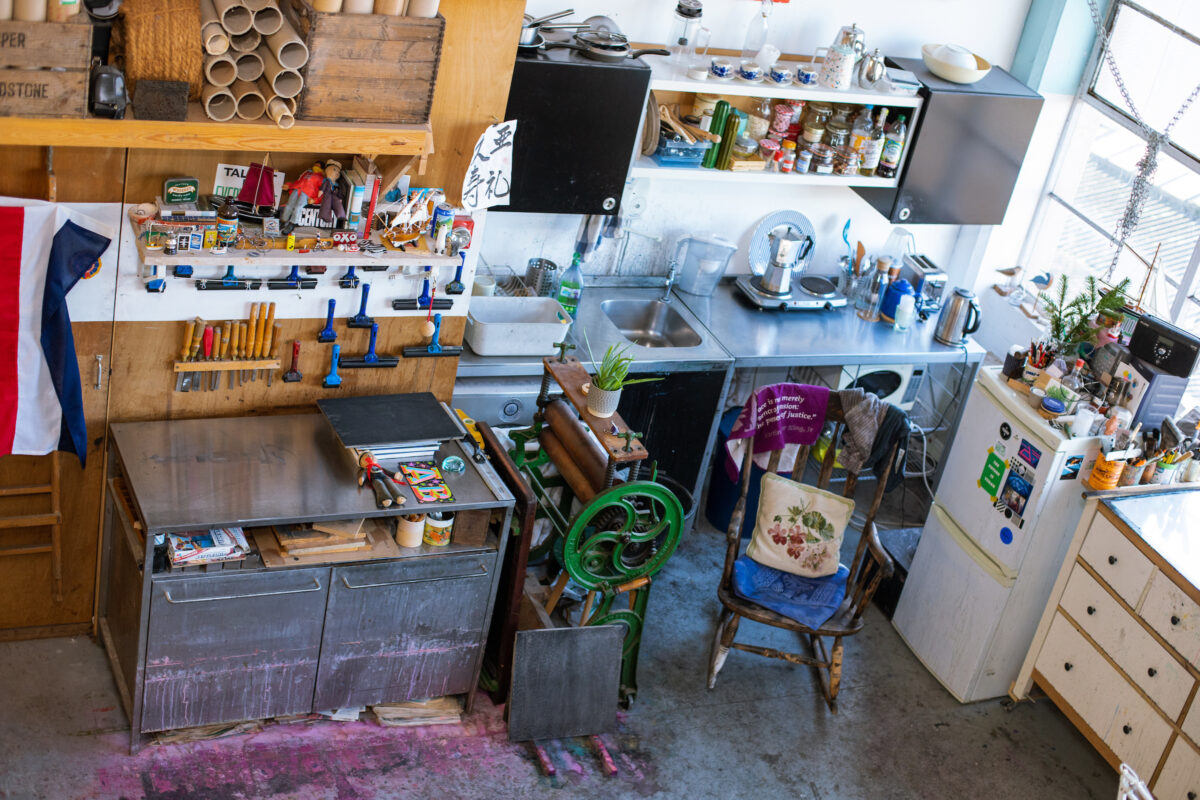
UK-Based Suppliers and Materials Links
Smart Green Shop: Tesamoll Thermo Cover
B&Q and Wickes: Weatherproofing, thermal curtains, radiator reflector foils.
Eco Rugs and Carpetright: Natural fibre rugs and mats for eco-friendly floor insulation.
Screwfix and Toolstation: Affordable energy-efficient heaters, thermal tapes, and radiator reflectors.
Herschel Infrared and The Green Age: Sustainable infrared heating panels.
Renée Materials has various pop-up hubs and a few permanent locations, including at Arbeit Studios in Hackney Wick:: https://reneematerials.co.uk/shepherds-bush
Credits and Sources
- EcoHome Insulation: Advice on sustainable insulation materials.
- Energy Saving Trust: Guidance on efficient heating methods for workspaces.
- The Green Age: Eco-friendly heating solutions like infrared panels.
- Steemit – Art Heating Tips by Matt Philleo: Practical experience on affordable studio heating.






